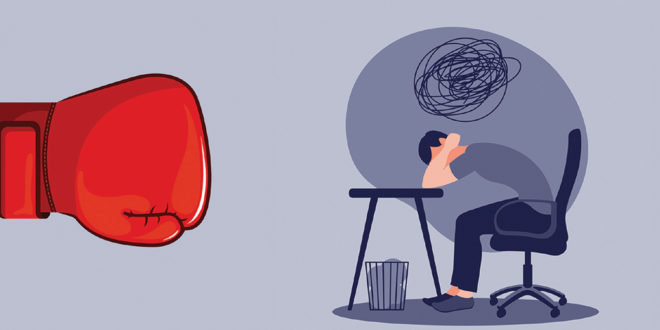‘Burnout and the Mobilisation of Energy’ is a radical new book by Annamaria Garden. Its main objective is to help individuals or organisations to get out of burnout and to keep out of it. Further, it helps them to activate or mobilise energy. Below Annamaria gives us a run down on her new book.
What is it about burnout that intrigues us? Is it because we don’t really understand it? It sounds just like stress so why have a new name for it?
For the past 40 years I have explored and studied burnout. Starting from the assumption that we don’t actually know if it exists, I have developed an understanding of it and why it intrigues people. I have steered away from the conventional wisdom about burnout because my early research demonstrated it was off-track. Since then, I have completed a PhD on burnout, run a consultancy practice in London for fifteen years during which time I worked with many individuals who were burnt out or nearly there, and completed a piece of research on 20 mental health workers in New Zealand. In the middle of this ran a related theme: how to mobilise energy in individuals, jobs and organisations. This is not quite the same thing as burnout or its opposite, it is independent.
Making sense of burnout
How do you differentiate burnout from its like-syndromes such as stress, anxiety, depersonalisation and depression? A sure-fire way is to look for the key defining symptom – a particular form of energy depletion which is hard to get out of. Standard recipes for re-charging one’s energy do not seem to work. For example, you wake up exhausted even though you have had a good night’s sleep; you take a few days off to rest but the energy refill lasts only a few hours once you go back to your normal routine. Because of these factors you start to panic and feel helpless. It is hard to understand what this ‘thing’ is. It is burnout. It is unique. Solutions for stress and anxiety might not work. It can affect anyone in any age group.
When I was burnt out myself, I stopped doing anything because ‘anything’ was still exhausting to do. I know, with hindsight, the indignity of ending up in hospital triggered my subsequent wellness. I had ended up in hospital where they diagnosed me as having exhaustion from overload due to overworking, but the diagnosis may have been inaccurate. Burnout, which I knew it to be, was not the same thing as exhaustion from overload. I was aware of this from my PhD on burnout. I knew from this that burnout was more complex than overwork. Later, I decided to draw together what I did know about burnout.
The book
The book describes three conditions distinguishing high from low burnout people: boundaries, closure and self-investment. People who get away with working hard and not getting burnt out have clear strong boundaries between themselves and their work and other people. High burnout people do not. The former group also operate in such a way they have good closure, i.e., they finish things easily. High burnout people do not. Finally, low burnout people focus on assessing what is required in a situation and then determine how much effort they are going to spend meeting that output or standard. A high burnout person will not; they will focus only on putting as much effort as possible into everything they do (even when they are burning out).
Why do the high burn out group behave like this? Because of a Gestalt term called an ‘Introject’ and a term used by Carl Jung called ‘Enantiodromia’. An introject is an idea, message or ‘should’ you’ve internalised but it isn’t ‘you’. Nevertheless, this Introject ‘runs you’. For me, the Introject implicated in burnout was to Hurry Up. Everything I did had to be done in a hurry. Enantiodromia means you have been expressing only one side of yourself (such as ‘being a nice person’) and this over-reliance is implicated in burnout too.
What can be done?
When looking at burnout, the time spent on leisure actually matters more than the hours spent at work. If burning out, we often cancel leisure, so it is important to reinstate the leisure activities we enjoy. It is important to start pacing; stopping for 5-10 minutes every few hours. Do something else or sit still with your eyes closed. Try to do a combination of activities even if it means doing something you are not particularly good at. You can also try and find out what your Introject is. However, an Introject is a psychological concept. You do not have to go to this level or depth to get out of burnout. You can, instead, read the quotations in my book, describing the different approaches to life and work, of those who are high in burnout, compared with those who are low. You can, with effort, adopt the strategies of the latter. This is how I became a low burnout person, even though I work hard.
Mobilisation of energy
What is mobilisation of energy, then? I use a psychological frame work to understand this. You can start at an individual level with the prescriptions above, such as pacing. They help to mobilise your energy at an individual level. However, I use this Gestalt concept to help me work with jobs and organisations as well. At these levels, mobilisation of energy helps us understand why many organisations have low levels of motivation or, alternatively, need to be filled with incentives and targets to get the behaviour required from employees. These can be a sign that the natural flow of activated energy is not really present. There are a few chapters in the book that describe this phenomenon.
Burnout and the Mobilisation of Energy by Annamaria Garden, Austin Macauley Publishers, RRP $32.50. Available from any good bookshop. More information at www.annamariagarden.co.nz










Join the Discussion
Type out your comment here:
You must be logged in to post a comment.